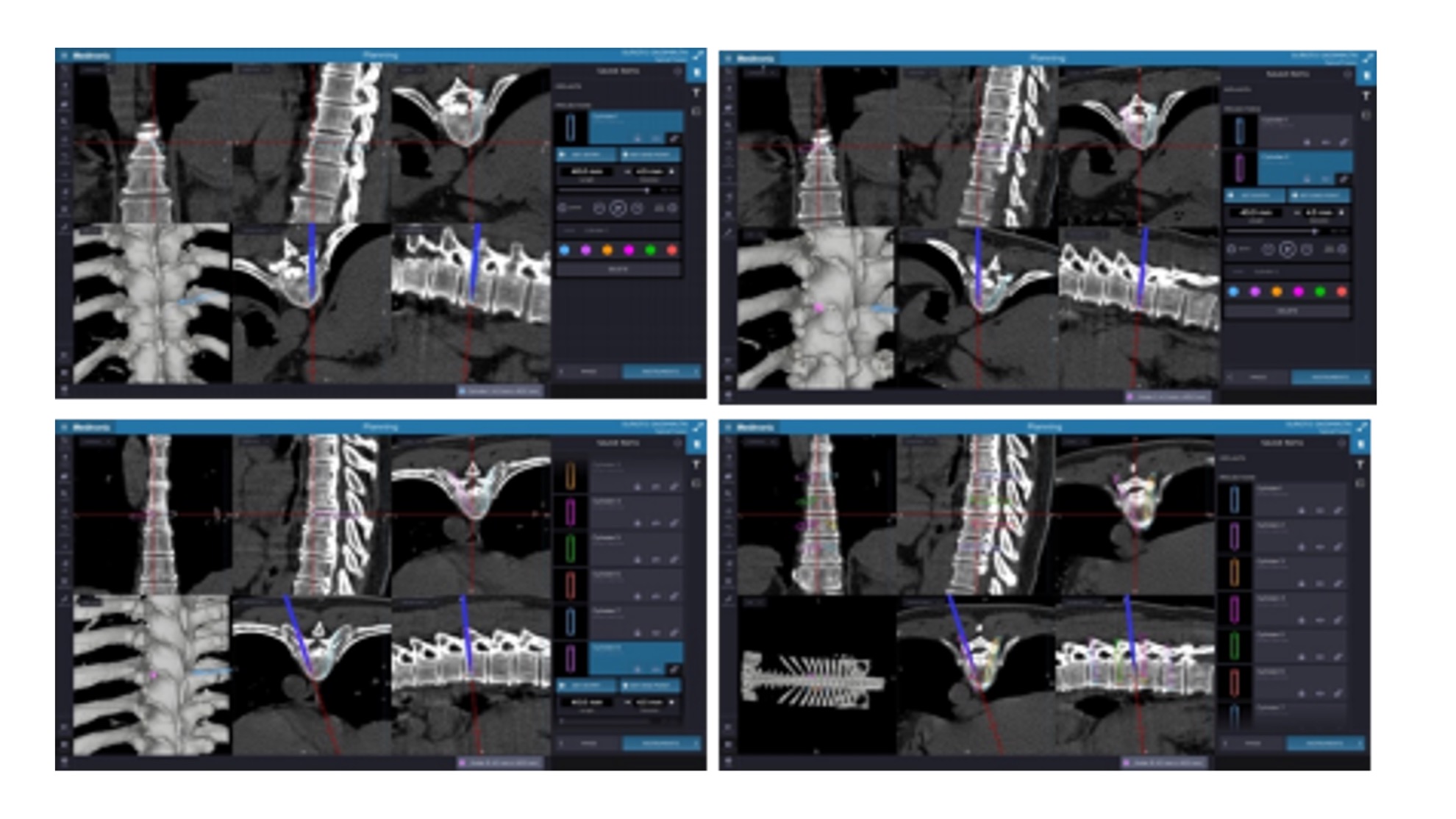First Experience: The Use of Spine Navigation at Arifin Achmad General Hospital, Riau Province: A Case Report
Main Article Content
Abstract
Background: Neuronavigation is a navigation system that assists neurosurgeons in performing surgery using real-time three-dimensional images from CT, MRI, or C-arm, providing benefits such as shortened operation duration, increased accuracy, and reduced radiation exposure for both patients and operators. In Indonesia, the use of neuronavigation in spine surgery is still rare, and no literature explains the experience of using this technology.
Case Report: We reported the first experience of using neuronavigation at Arifin Achmad General Hospital, Riau Province, in a case of thoracic canal stenosis. A 53-year-old male patient, a palm oil farmer, presented with weakness in both lower limbs, urinary and fecal incontinence, and increased physiological reflexes. MRI examination revealed spinal cord stenosis at thoracic discs VII-X. The patient underwent decompressive laminectomy and posterior stabilization assisted by neuronavigation. The use of neuronavigation allowed precise and efficient placement of surgical instruments, dynamically displayed on the monitor screen, reducing radiation exposure and increasing the accuracy of pedicle screw placement.
Conclusion: The use of navigation technology in spinal surgery will be an innovation that increases efficacy and patient safety. Its adoption is expected to become more common as more literature explains its benefits, especially in spinal surgery.
Article Details

This work is licensed under a Creative Commons Attribution 4.0 International License.
How to Cite
References
Kemal M, Derg Üt, Kağan Başarslan S, Göçmez C. Başarslan Ve Ark. 24 Neuronavigation: A Revolutionary Step Of Neurosurgery And Its Education.
RawickiN, Dowdell Je, Sandhu Hs. Current State Of Navigation In Spine Surgery. Ann Transl Med. 2021 Jan;9(1):85–85.
Zhang M, Xiao X, Gu G, Zhang P, Wu W, Wang Y, Et Al. Role Of Neuronavigation In The Surgical Management Of Brainstem Gliomas. Front Oncol. 2023;13.
Chartrain Ag, Kellner Cp, Fargen Km, Spiotta Am, Chesler Da, Fiorella D, Et Al. A Review And Comparison Of Three Neuronavigation Systems For Minimally Invasive Intracerebral Hemorrhage Evacuation. J Neurointerv Surg. 2018 Jan 1;10(1):66–74.
RawickiN, Dowdell Je, Sandhu Hs. Current State Of Navigation In Spine Surgery. Ann Transl Med. 2021 Jan;9(1):85–85.
Tian W, Liu B, He D, Liu Y, Han X, Zhao J, Et Al. Guidelines For Navigation-Assisted Spine Surgery. Front Med. 2020 Aug 1;14(4):518–27.
Zheng Q, Liu C, Pan Q, Chang J, Cui J. Development Status And Application Of Neuronavigation System. Journal Of Complexity In Health Sciences. 2020 Jun 30;3(1):9–25.
Drazin D, Grunert P, Hartl R, Polly D, Meyer B, Catchpole K, Et Al. Highlights From The First Annual Spinal Navigation, Emerging Technologies And Systems Integration Meeting. Ann Transl Med. 2018 Mar;6(6):110– 110.
